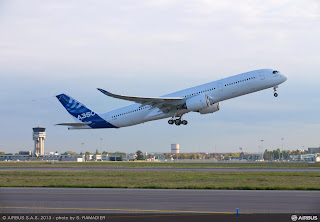In the era where increased incidents and accidents are attributed to flight crew non-adherence to procedures, what can be done to ensure increased SOP compliance?
Showing posts with label AIRBUS. Show all posts
Showing posts with label AIRBUS. Show all posts
Saturday, November 16, 2013
Increasing SOP Compliance
Srinivas Rao | 12:27 AM |
A320
|
A330
|
A340
|
A350
|
A380
|
AIRBUS
|
procedures
|
SAFETY
|
SOP
|
STANDARDS
|
TASKS
|
TRAINING


Saturday, November 9, 2013
AIRCRAFT GO-AROUND MANEUVER
Srinivas Rao | 3:11 AM |
A330
|
A350
|
AIRBUS
|
AIRCRAFT
|
crew
|
DECISON MAKING
|
GO AROUND
|
procedures
|
SAFETY
|
TRAINING


One question that is frequently asked in aviation circles about piloting issue is as to why a go-around was not carried out when the approach was unstable.
What is it that makes a well trained and proficient crew shy
away from conducting a go-around on the approach when it is required so??
Labels:
A330,
A350,
AIRBUS,
AIRCRAFT,
crew,
DECISON MAKING,
GO AROUND,
procedures,
SAFETY,
TRAINING
Sunday, May 27, 2012
A380 PUSHING TECHNICAL BOUNDARIES
Srinivas Rao | 11:01 PM |
A380
|
A380 CRACKS
|
AERODYNAMICS
|
AIRBUS
|
COMPOSITES
|
THEORY OF FLIGHT


Airbus has always been at the forefront of pushing technical
boundaries in aviation and excelling in aircraft design and technology. Airbus
says efforts to lower the weight of the world's largest airliner lay behind
recent A380 wing cracks and pledged to learn from mistakes that lay
dormant for a decade, as repair costs looked set to climb towards 500 million
euros ($A642 million).
Labels:
A380,
A380 CRACKS,
AERODYNAMICS,
AIRBUS,
COMPOSITES,
THEORY OF FLIGHT
Tuesday, May 22, 2012
A330 PASSENGER TO FREIGHTER PROGRAM
According to Airbus press release today,Airbus, ST Aerospace and EADS EFW have finalised the agreement to establish the collaboration for the launch of the A330 Passenger-to-Freighter (P2F) conversion programme. This follows the MoU announced at the Singapore Airshow in February this year setting out the project’s foundation and granting ‘Authorisation To Offer’ for the A330P2F.
Saturday, May 19, 2012
DOWNWARD FACING WINGLETS
Aircraft
designers have traditionally used winglets as a means to reduce induced drag
and save on consequent fuel burn aka operating costs. Over the years several
designs have emerged and the classic end plates and winglets are common in
Boeing and airbus models. General aviation aircraft on the other hand have more
innovative designs of winglets to enhance operational cost benefits.
 While
an equivalent increase in wingspan would be more effective than a winglet of
the same length, the bending force becomes a greater factor. Typically, a three-foot winglet has the same
bending force as a one-foot increase in span, yet gives the same performance gain
as a two-foot wing span increase. For
this reason, most designers have concentrated their efforts in winglets designs
to reduce drag.
While
an equivalent increase in wingspan would be more effective than a winglet of
the same length, the bending force becomes a greater factor. Typically, a three-foot winglet has the same
bending force as a one-foot increase in span, yet gives the same performance gain
as a two-foot wing span increase. For
this reason, most designers have concentrated their efforts in winglets designs
to reduce drag.
Labels:
AERODYNAMICS,
AIRBUS,
B737 MAX,
DRAG REDUCTION,
WINGLETS
Saturday, May 12, 2012
COMPOSITE MATERIALS IN AIRCRAFT
Subscribe to:
Comments (Atom)






